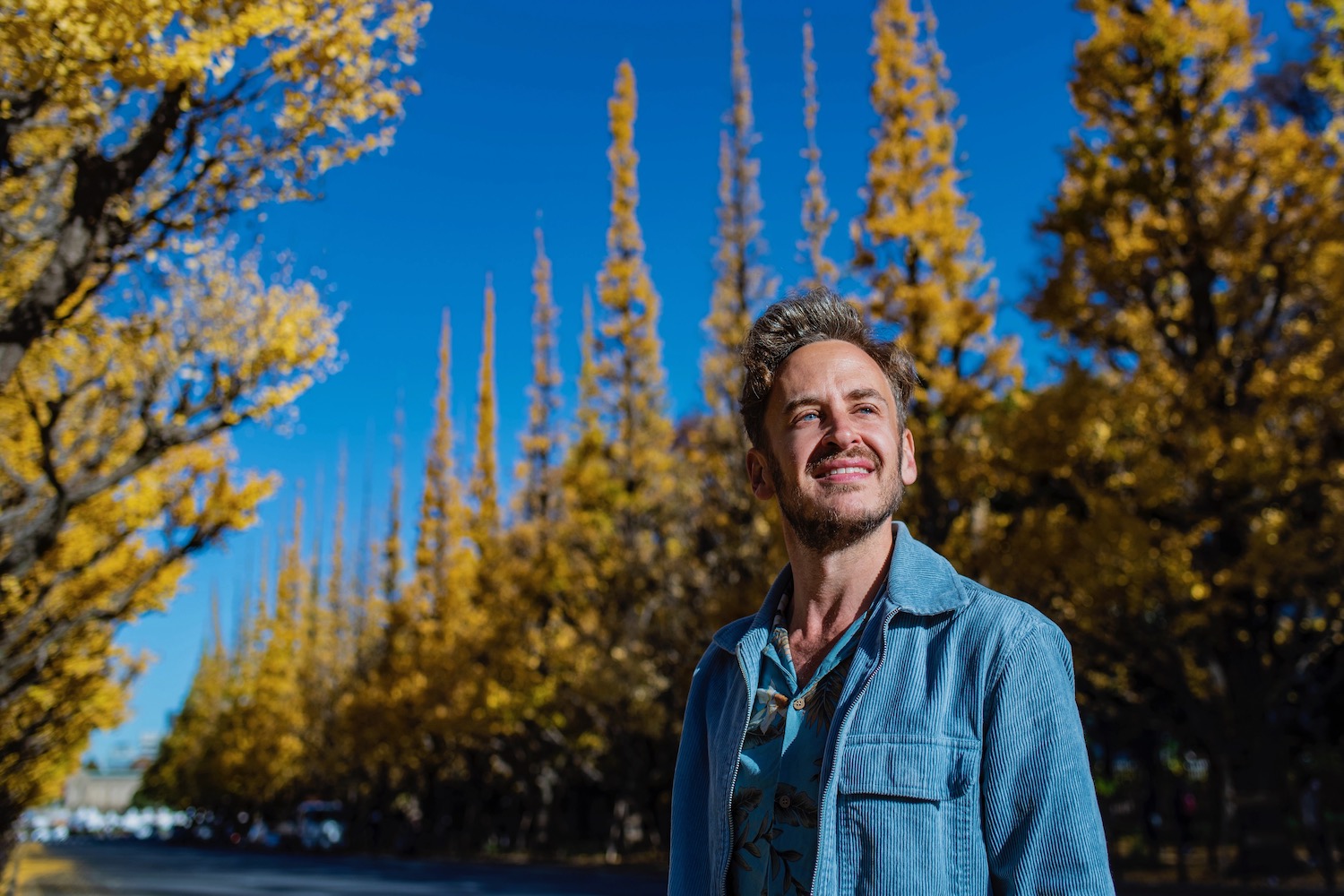When you think of autumn in Japan, you think of ancient temples. You think of deep forests. You think of ancient temples deep in forests!
You may think of certainly cities—namely, Kyoto—but probably not the biggest one of all, Tokyo. I can understand why this is, as I thought the same way for a long time, but I urge you to reconsider. Japan’s capital, it turns out, is an incredibly place to enjoy fall foliage.
Over the next few paragraphs, I’ll give advice on where you can see autumn leaves in Tokyo in 2025, as well as the surprising timing of Tokyo’s fall colors.
Autumn in Tokyo Takes Place Later Than You’d Think
If you want to see autumn leaves in Tokyo, you should avoid visiting the capital in October, and even for most of November. In most years, in fact, it is only after December 1 (sometimes, significantly after December 1) that maples and ginkgoes in the capital reach their peak red and yellow vibrancy. I’ve seen leaves stay on trees until January on more than one occasion!
Now, it’s unlikely that you will be coming only to Tokyo if you do visit Japan in fall, so there’s an easy way to make sure the timing lines up: End your trip here. For instance, let’s say you plan to arrive in Japan in mid-November and want to visit the Kansai and Chugoku regions. If you start in Hiroshima, then make your way eastward to Osaka and Kyoto and finally to Tokyo, you’ll maximize your chances of seeing peak colors all along your route.
The Best Fall Color Spots in Tokyo
Meiji Jingu Gaien
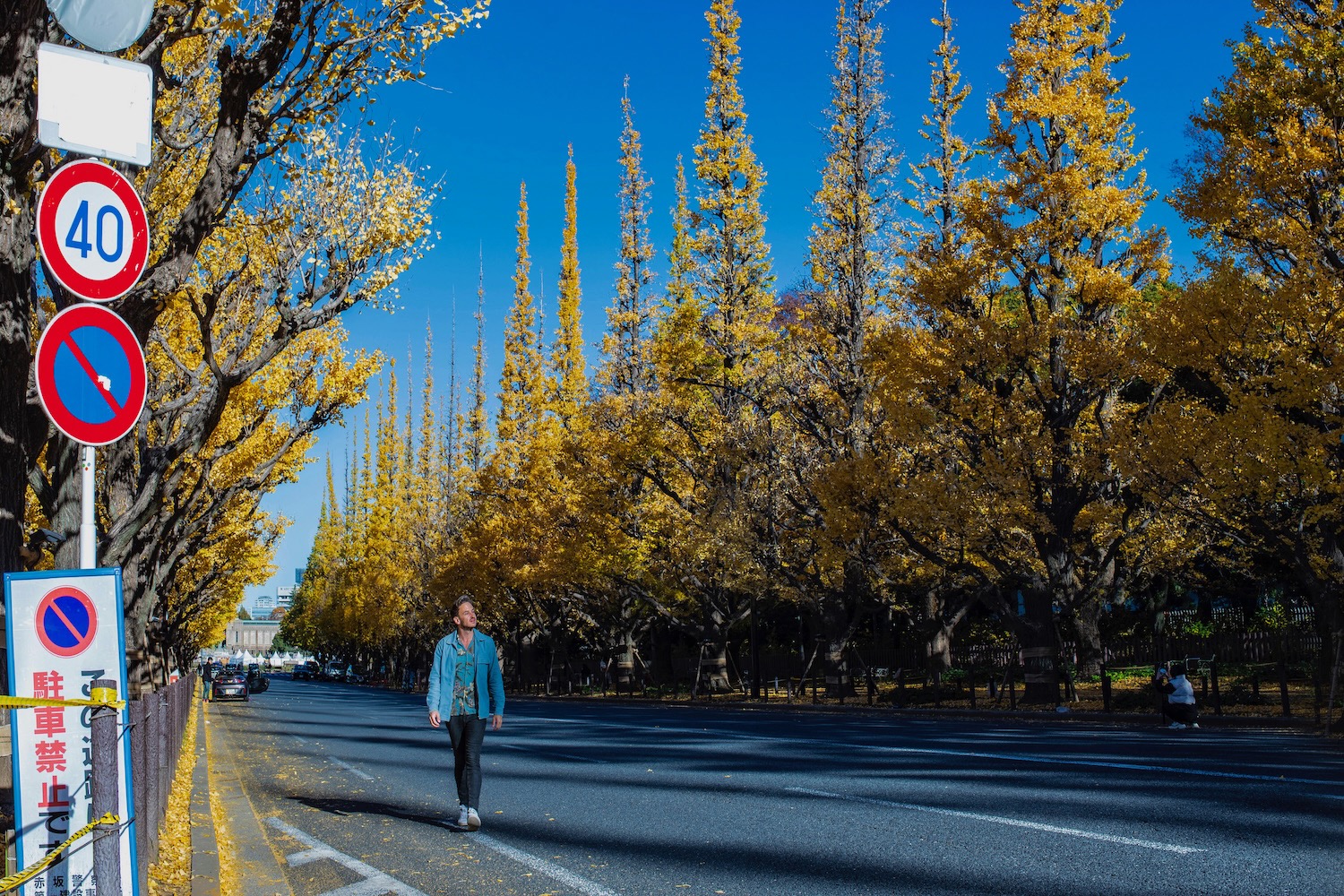
The ginkgo leaf is the symbol of Tokyo, which makes sense if you visit the city in autumn. While the golden trees are almost everywhere, my favorite place to see them is in Meiji Jingu Gaien, a street in the Aoyama neighborhood. Here, the trees have been trimmed to sharp points at their tops, which gives the entire row of them a whimsical, Dr. Seuss-like feel.
Asakusa

Another amazing place to see fall colors in Tokyo is Asakusa. If you come earlier in the season, many of the cherry trees in the courtyard of Senso-ji temple and along the Sumida River will still be showing their crimson leaves. Once those fall off, you can see both golden ginkgoes and deep, scarlet momiji (maples) throughout this historic district.
Shinjuku Gyoen National Garden
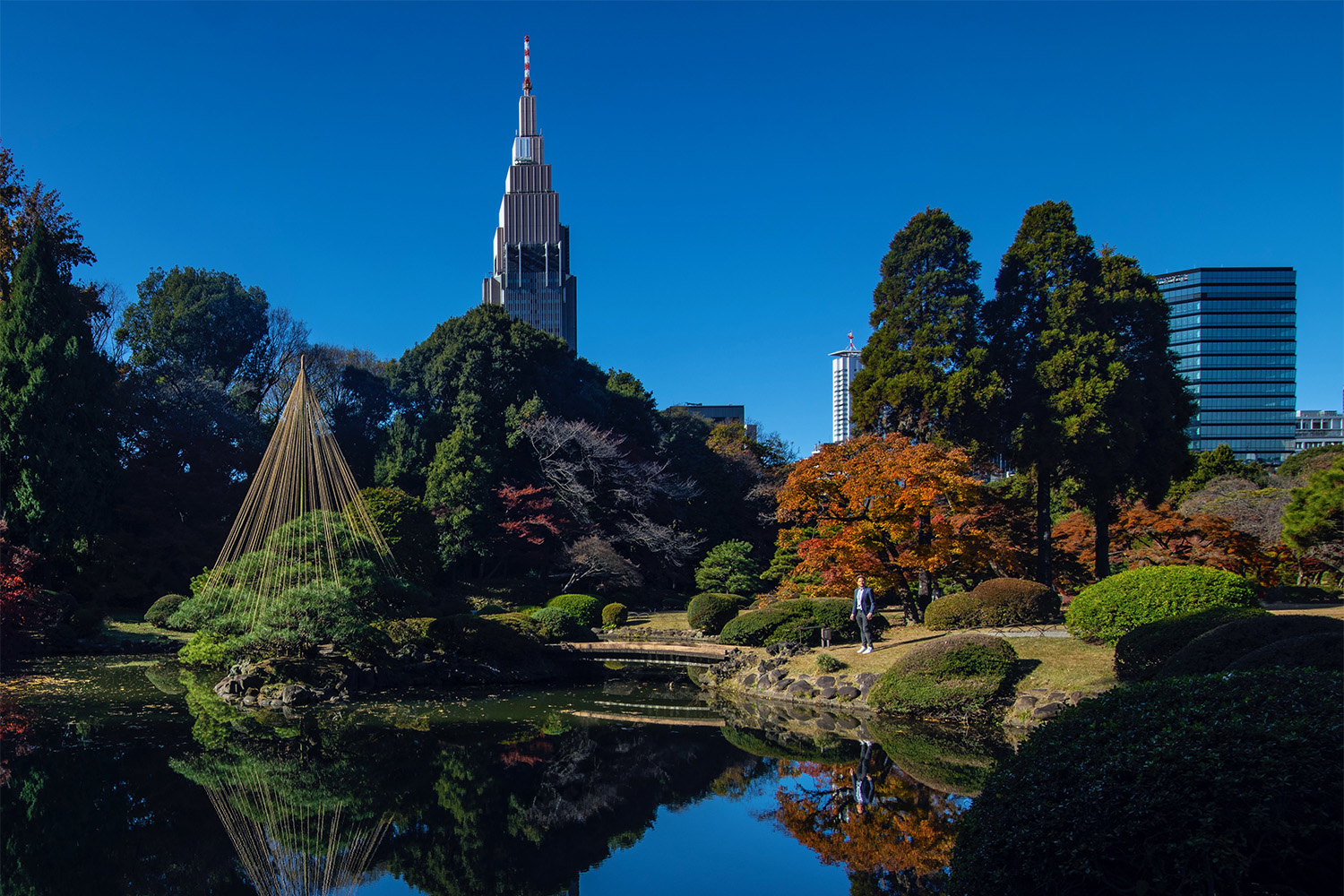
While a great deal of the joy of autumn in Tokyo is seeing the timeless nature juxtaposed with the city’s modern architecture, there’s something to be said about taking a purer approach—heading to a park or garden. A great place to do this is Shinjuku Gyoen National Garden, located about 20 minutes by foot from central Shinjuku. Well, it’s not completely pure: The green space neatly frames iconic Docomo Building (and other skyscrapers).
Harajuku
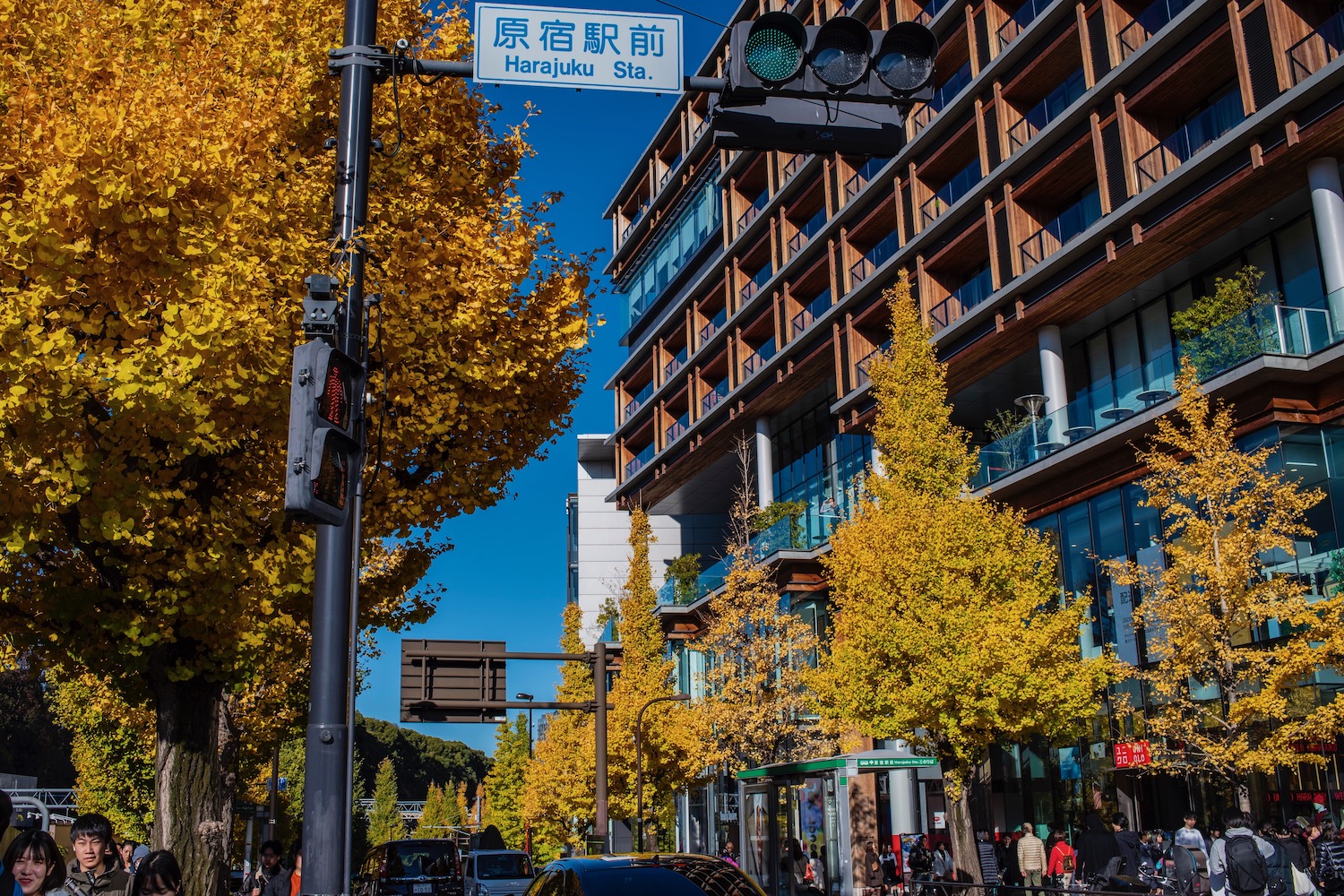
Want to see autumn leaves in Tokyo without deviating from a typical sightseeing plan? Some of the city’s most vivid colors are hiding in plain sight, not far from typical tourist attractions. For example, as you exit Harajuku Station and walk toward Takeshita Street, you’ll stroll under dozens of ginkgo trees—which, if you’e lucky, will be blazing the perfect shade of golden yellow.
Koishikawa Korakuen
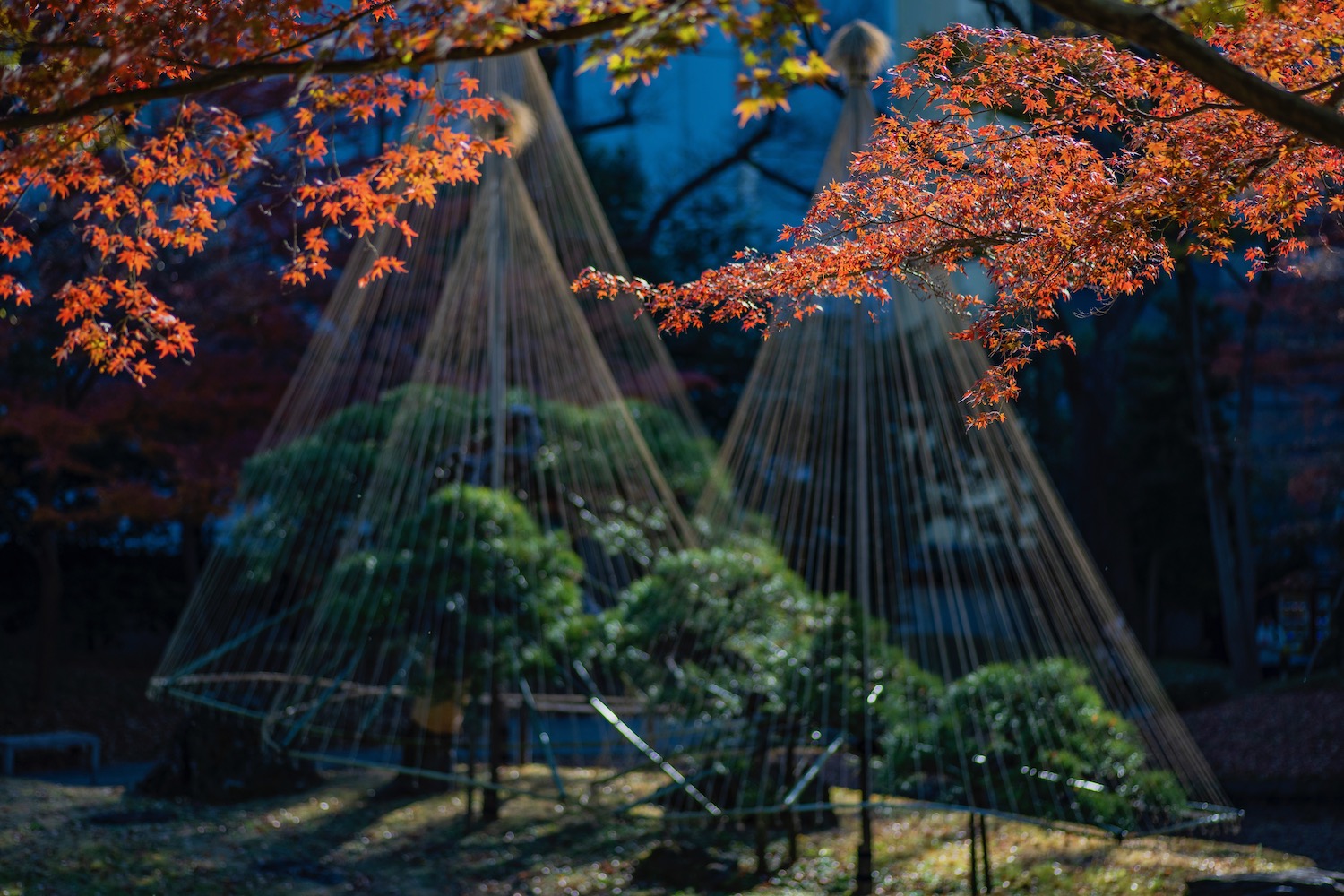
A smaller and more traditional Japanese garden than the larger Shinjuku Gyoen, Koishikawa Korakuen is probably the most…well, Japanese-feeling place to enjoy Tokyo’s seasonal foliage. One of my favorite parts about walking through the garden is the yukizuri supports used to hold up its pine trees. These are more ornamental than functional, given how little it snows in Tokyo, but they add a certain je ne sais quoi to the experience.
Rikugi-en
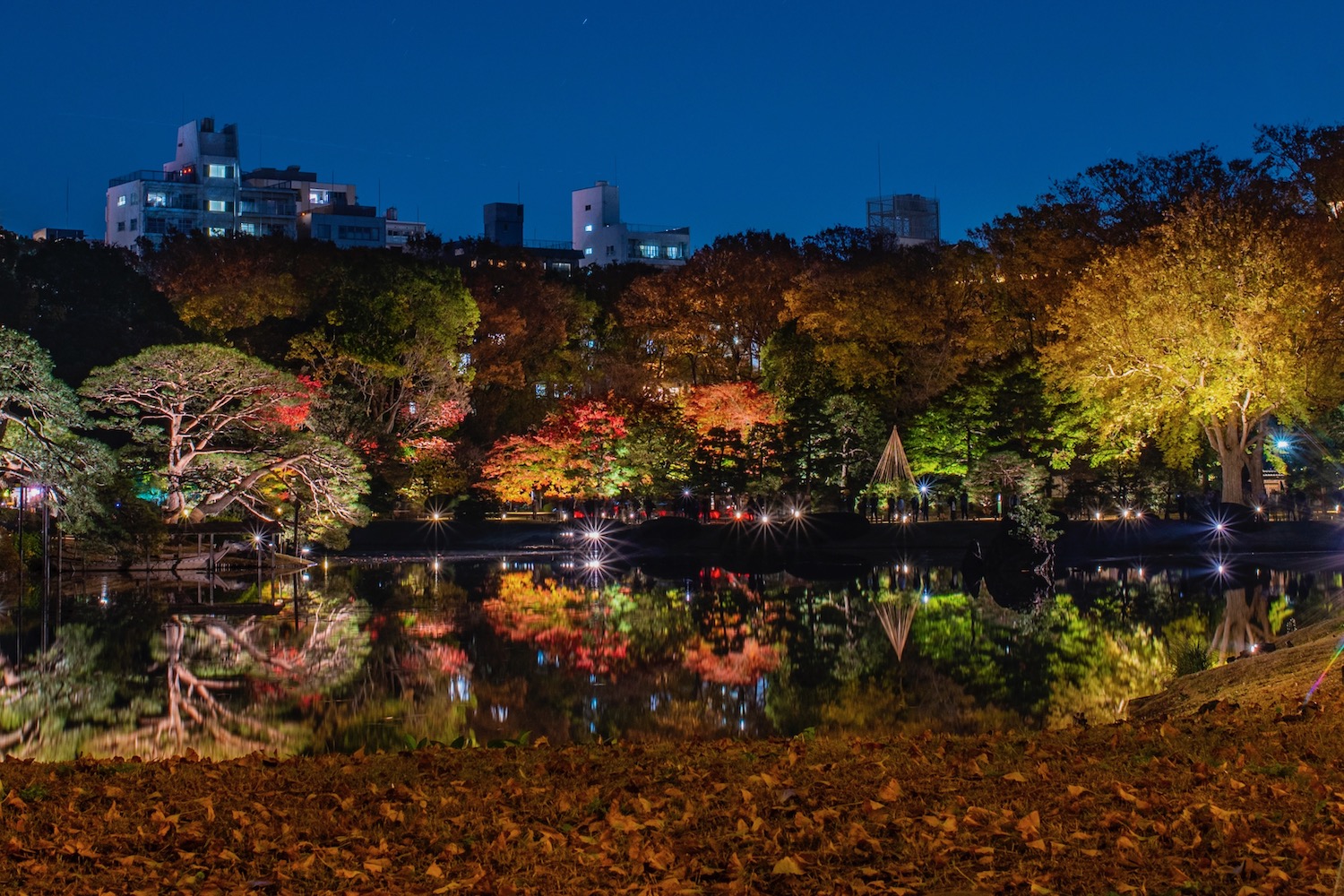
Located somewhat far outside the city center, Rikugi-en is not the most obvious choice for where to see fall leaves in Tokyo. This is especially true when other options I’ve listed in this post are much more convenient, and easier to access. On the other hand, what sets this place apart is its nighttime illuminations, made all the more satisfying by the hot amazake and chewy mitarashi dango dumpling on offer.
Bonus: Keiyaki-zaka slope
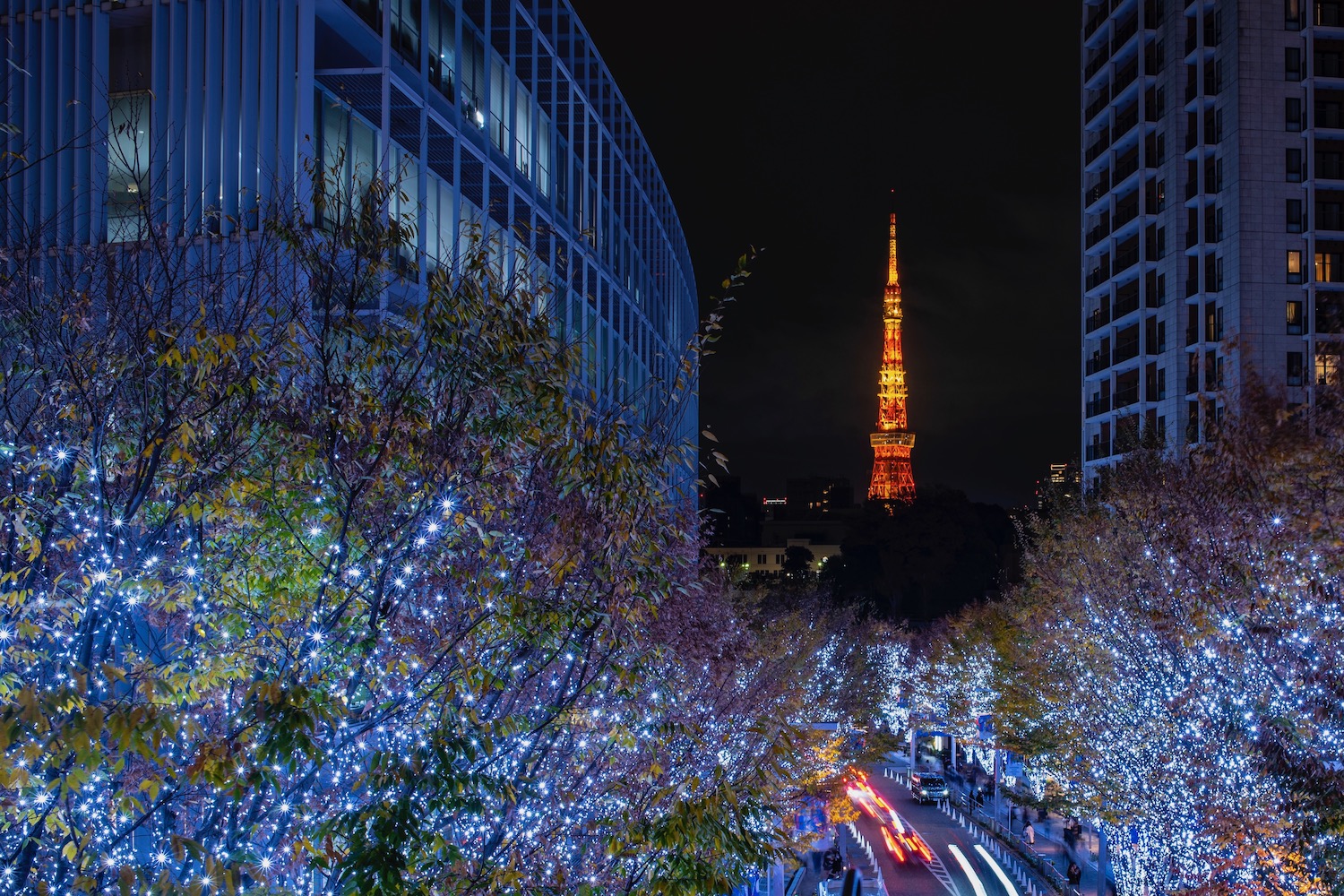
The bad news? The Zeklova trees along Keyaki-zaka in Roppongi tend to go from green to brown relatively quickly during the Tokyo autumn. The good news? Authorities string them with lights pretty early in the season, which means that if you come here at night, you’ll see them perfectly framing Tokyo Tower as you look southeastern down the street.
My Favorite Fall Color Day Trips from Tokyo
While Tokyo has surprisingly satisfying autumn colors for the biggest city in the world, you’ll find many of the best ones outside the city center:
- Mt. Takao: Located to the west of Tokyo’s western suburbs, this hilly region changes a few weeks before Tokyo-proper, and is great choice if you’re visiting in November.
- Kamakura: Whether you stay amid the temples and Buddha of Japan’s erstwhile capital, or take a day-trip-within-a-day-trip to Yokohama or Enoshima, the autumn foliage here does not disappoint.
- Nikko: Located in the mountains of Tochigi prefecture about 90 minutes from Tokyo, this is the best autumn day trip from Tokyo if you’re visiting in late October or early November.
- Saitama: If seeking Edo-era Kawagoe decked out in red and yellow doesn’t move your soul, attending the once-annual Chichibu Yomatsuri night festival should do the trick.
Other FAQ About Visiting Tokyo in Autumn
What month is fall in Tokyo?
The majority of autumn leaves in Tokyo reach their peak after December 1, which surprises most people from the US and Europe. Based on Tokyo’s latitude, you’d assume its leaves would change colors in October or November, but this is simply not the case.
When can you see autumn leaves in Tokyo?
The best time for seeing autumn leaves in Tokyo’s city center is during the first week or two of December. If you come in November, you’ll need to go far outside the city into the mountains to see autumn leaves. In early November, head north to historical Nikko; in late November, Mt. Takao in suburban western Tokyo is your best bet.
Is Tokyo better in November or December?
I personally prefer Tokyo in December, as this month sees the peak of the city’s autumn colors, particularly its iconic golden ginkgo trees. However, if you can look past the lack of colorful leaves, November is a fine time to visit Tokyo as well.
The Bottom Line
Where can you see autumn leaves in Tokyo in 2025? Some of the places on the list are unsurprising, namely green (well, red and yellow) spaces like Koishikawa Korakuen and Shinjuku Gyoen National Garden. Likewise, you won’t find it shocking that historical districts such as Asakusa are autumn foliage hot beds. On the other hand, many of the finest fall colors in Tokyo pop up in the heart of the concrete jungle, whether in upmarket Aoyama or near Harajuku’s iconic Takeshita Street. Want to make sure your autumn trip to Japan is amazing, no matter where it ends up taking you? Consider hiring me to plan it!



